Qingbai (Yingqing) Wares
Jingdezhen qingbai wares were first produced during the Northern Song period. A Northern Song official Peng Ruli.(彭汝砺)in his poem "(送许屯田)Sending off Xu on his Garrison mission" in Northern Song 2nd year of Zhiping (治平) (A.D. 1065) mentioned that Fuliang (where Jingdezhen was situated) made porcelain with colour like jade (浮梁巧烧瓷,颜色比琼玖). Jiang Qi's (蒋祈) work Tao Ji (陶记)of Southern Song period also commented that the consumers praised the Jingdezhen wares as Rao Yu, that is jade from Raozhou. As it has a light bluish colour tone, the term Qingbai (ie bluish white) was used to describe such wares. The term could be found in Song texts. The term yingqing (shadow blue) was coined during the Qing dynasty to describe this same category of wares.
Qingbai as compared with Tang/Song white wares has the following distinct differences: the glaze is more fluid with bluish tone where the glaze accumulated and a more whitish tone if it is thin. The glaze is more transparent with a greater degree of lustre.
The colourant of the qingbai glaze is the iron oxide in the raw materials used to make the glaze. The glaze composition is also high in calcium oxide which enable a bluish tinge to develop when fired under reduction atmosphere. The glaze has a light yellowish tone if not properly reduced during reduction firing.
Archaeological excavations revealed that Fanchang (繁昌) in Anhui (安徽) may have produced qingbai earlier than Jingdezhen. Jingdezhen is generally believed to have introduced Qingbai only in Northern Song while Fanchang's qingbai could be traced to at least around the 5 Dynasties period.
The popularity of Qingbai was enormous as witnessed by the production in numerous kilns in Jiangxi with areas around Jindezhen, Nanfeng and Jizhou being the key areas. Due ot their popularity, they were also produced in other provinces, the more notable provinces were Anhui, Zhejiang, Fujian and Guangdong. There was also huge overseas demand with physcial traces of such wares in Japan, Southeast Asia and even found their way to West Asia and middle East region.
Northern Song Period
Based on archaeological findings, Jingdezhen started porcelain production during the 5 Dynasties period. The kiln sites were located in the Suburbs of the city of Jingdezhen (important sites include Hutian (湖田), Yangmeiting (杨梅亭) and Huangnitou (黄泥头)) and in the South River area Xianghu (湘湖) and Baihuwan (白虎湾). During this period, the kilns produced mainly Yue type celadon and white wares. Products consisted of mainly bowls and dishes and ewers. During firing, the bowls and dishes were stacked using clay spurs as separators.
The kilns switched to production of white and Qingbai wares during the Northern Song period. The early Northern Song wares were fired on spurs and spurs marks could be found on the lip of the foot. Professor Liu Xinyuan of Jingdezhen Museum of Ceramic History, in an article written in the magazine wen wu in 1980 noted that among the deposits of sherds in Hutian kiln sites of early Northern Song, the glaze in most still showed yellowish tinge.
By the middle Northern Song period (2nd quarter of 11th century onward), the potters made great progress and the glaze became jade-like with a light bluish tinge. The most distinctive features is best illustrated in the bowls. It has taller foot and a smaller footring diameter. The base is thick and support the weight of the vessel when placed on a disc during firing. The wall of the bowls were thin. They were trimmed on a turning wheel after throwing on the potter's wheel. They were either plain or decorated with lightly carved/incised floral motif. A distinctive feature of the earlier pieces were the short dots left by a combing tool.
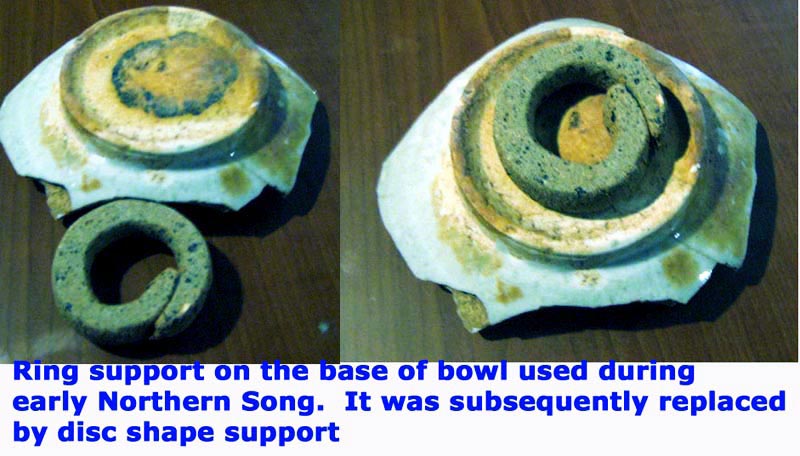

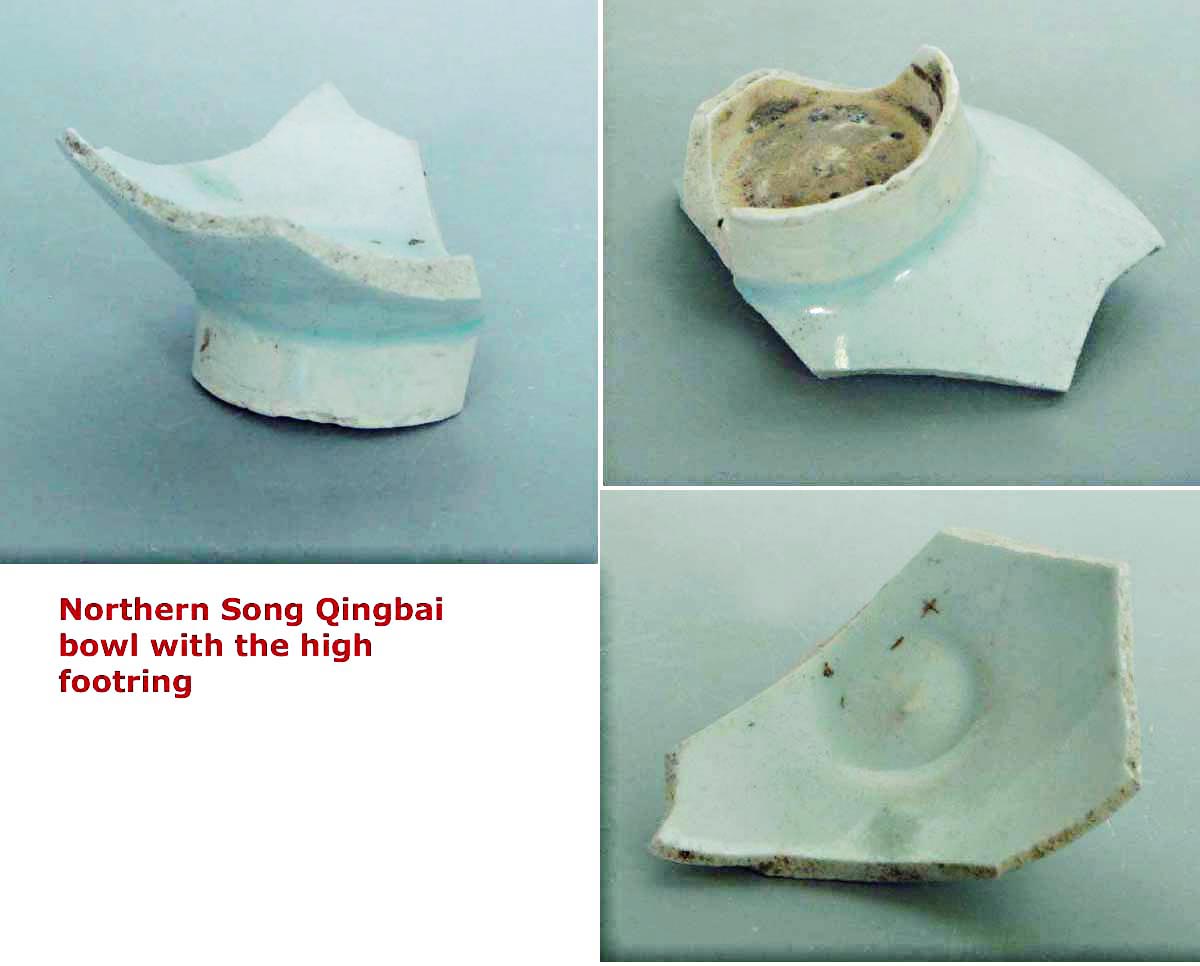
|
|
|
|
|
|
|
|
|
|
| The lightly carved floral motif and the distinctive short combed dots. It has the typical tall foot.This bowl was recovered from a Northern Song wreck in Indonesia |
|
|
|
|
| A bowl with lotus-like petals. The potting is thin and the from elegant. It usually comes in a set with varying sizes. |
There are also greater variety of vessels including bowls, dishes, ewers/warmers, tea cups/stands, censers, pillows, cover boxes, chess boxes and all sorts of figurines.
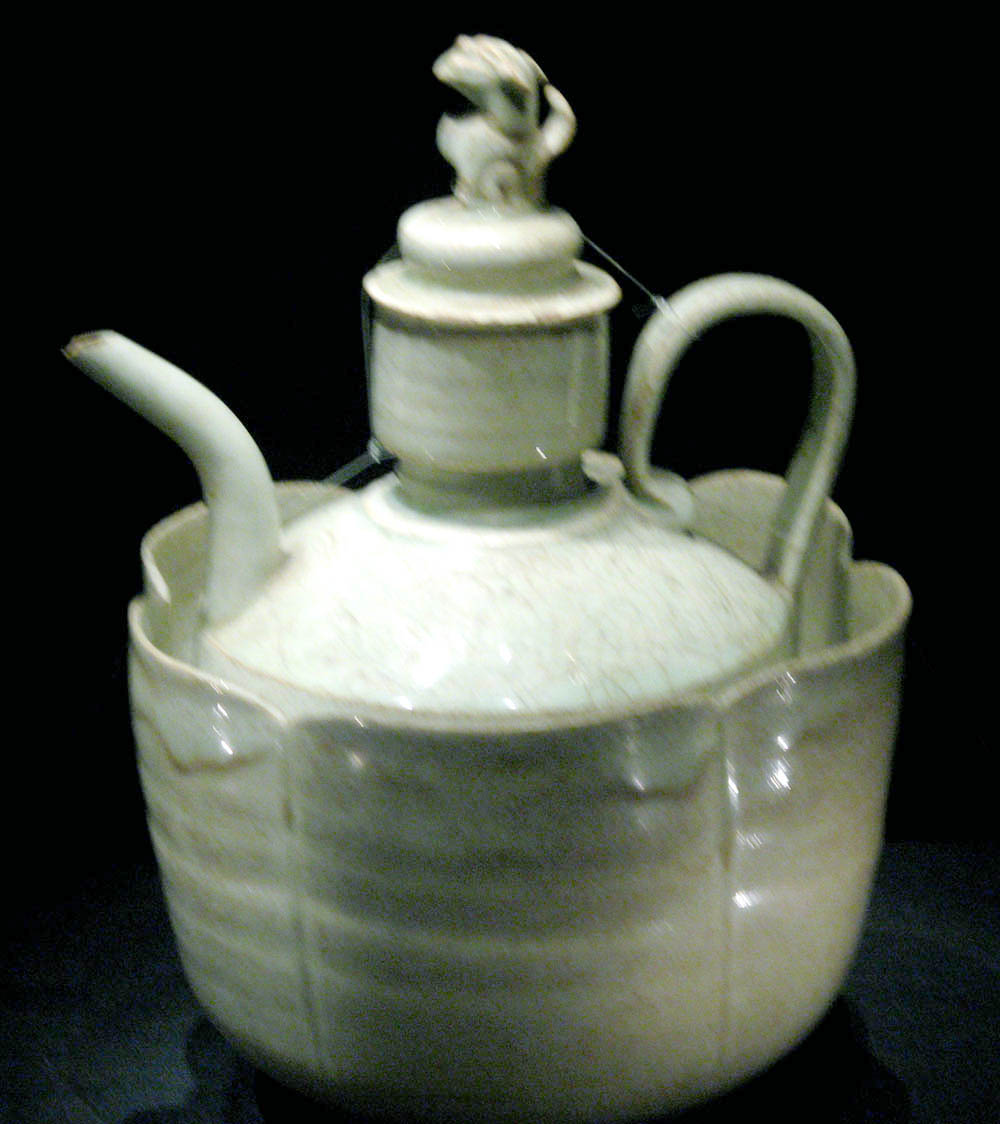 |
Ewer with the bowl was mainly produced during the Mid to late Northern Song period. The bowl is filled with hot water which served to warm the wine in the ewer. |
|
|
|
Late Northern Song cup with stand. The ewer could be dated slightly later to early Southern Song |
Southern Song Period
There were further development during the 12th Century (late Northern Song to Mid Song period). A larger number of the wares showed a good bluish green and have a jade like quality. There were more varied carved/incised decorations including chrysanthemums, lotus, waves, infants among foliage, fish and etc. As compared with the carving of the earlier period, it is sharper and the cut deeper.
|
|
|
|
| Late Song/Early Song bowl. The carving is more elaborate and deeply cut. As compared with the earlier period, the foot is also shorter. It was fired sitting a clay disc on the outer base. A brown patch is usually visible as a result. |
|
|
|
|
| Early Southern Song Qingbai bowl with carved waves and lotus motif. It is more shallow and a popular form of the Southern Song period |
The Nanhai shipwreck dated to the early southern Song period also carried certain quantity of Jingdezhen fine qingbai wares. The bowls and dishes are thinly potted with forms inspired by silver wares.
More examples of Southern Song Qingbai are shown below.
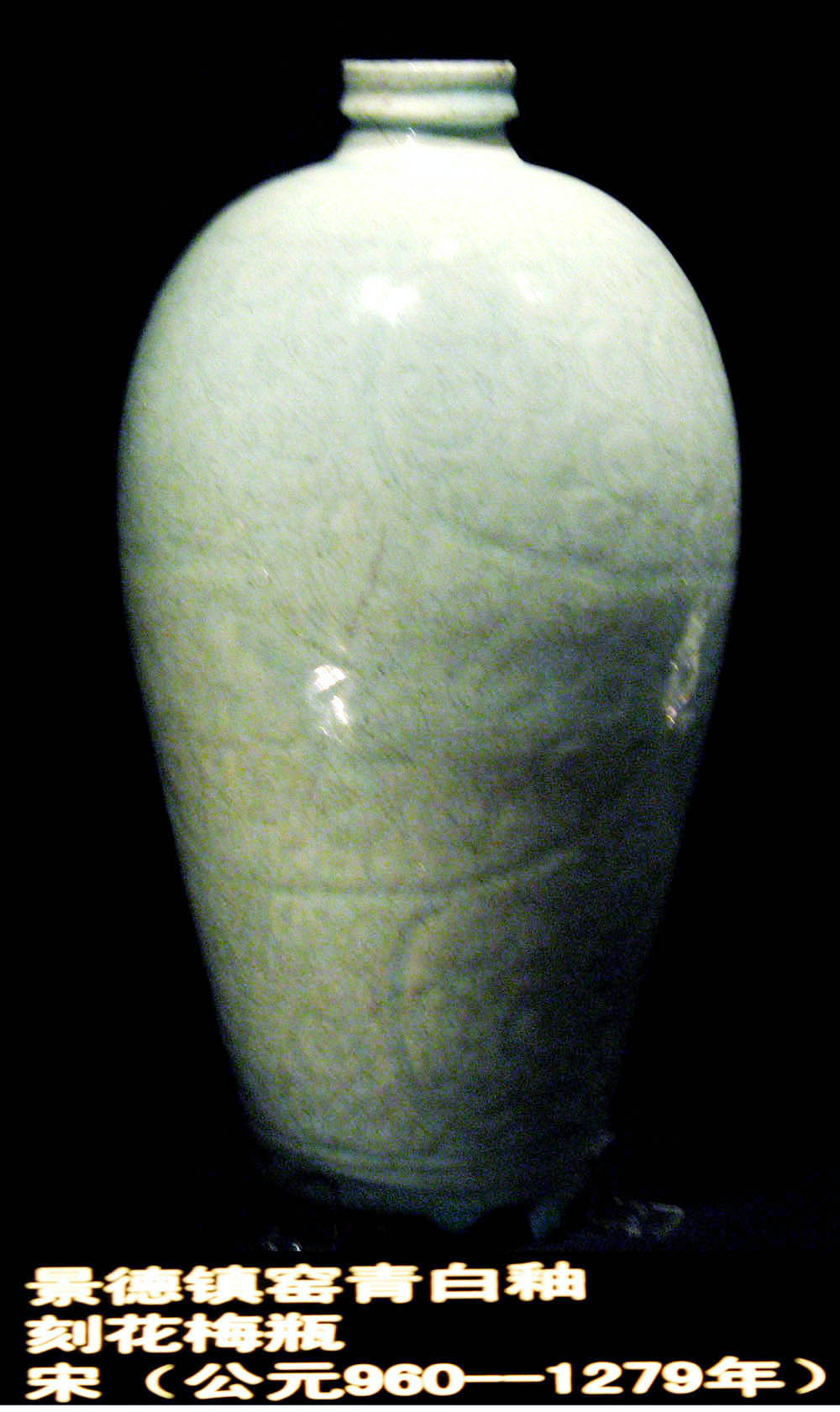
Early Southern Song meiping with carved floral motif
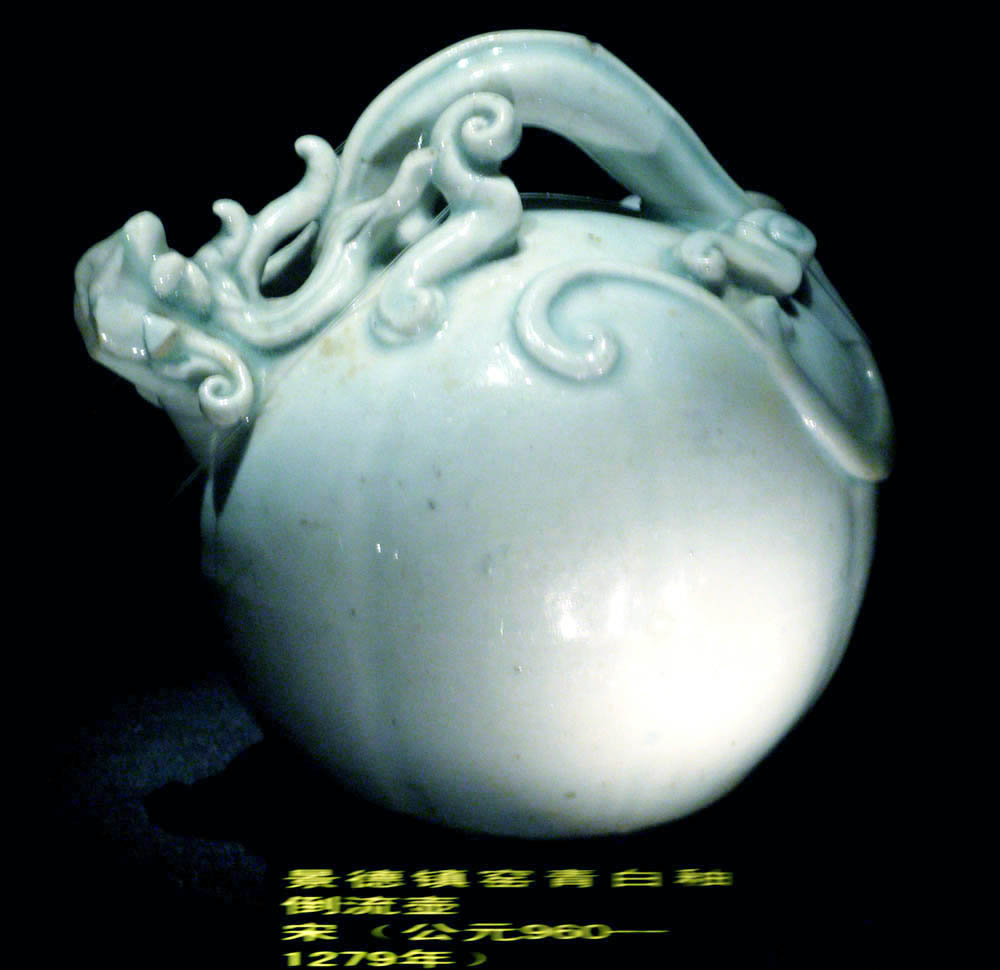
|
Southern Song dish with impressed floral motif |
|
|
Late Northern/Early Southern Song cover box with the factory mark |
|
The inverted firing in saggar was introduced during the the later part of 12th century. As a result, the mouth rim was left unglazed. This method economised and maximised the usage of kiln space. Besides the unglazed mouth rim, the foot of the bowls and dishes also became short. From the production point of view, it is inevitable as it enabled more vessels to be placed in the saggars. The decorative motifs of the bowls/dishes were predominantly impressed.
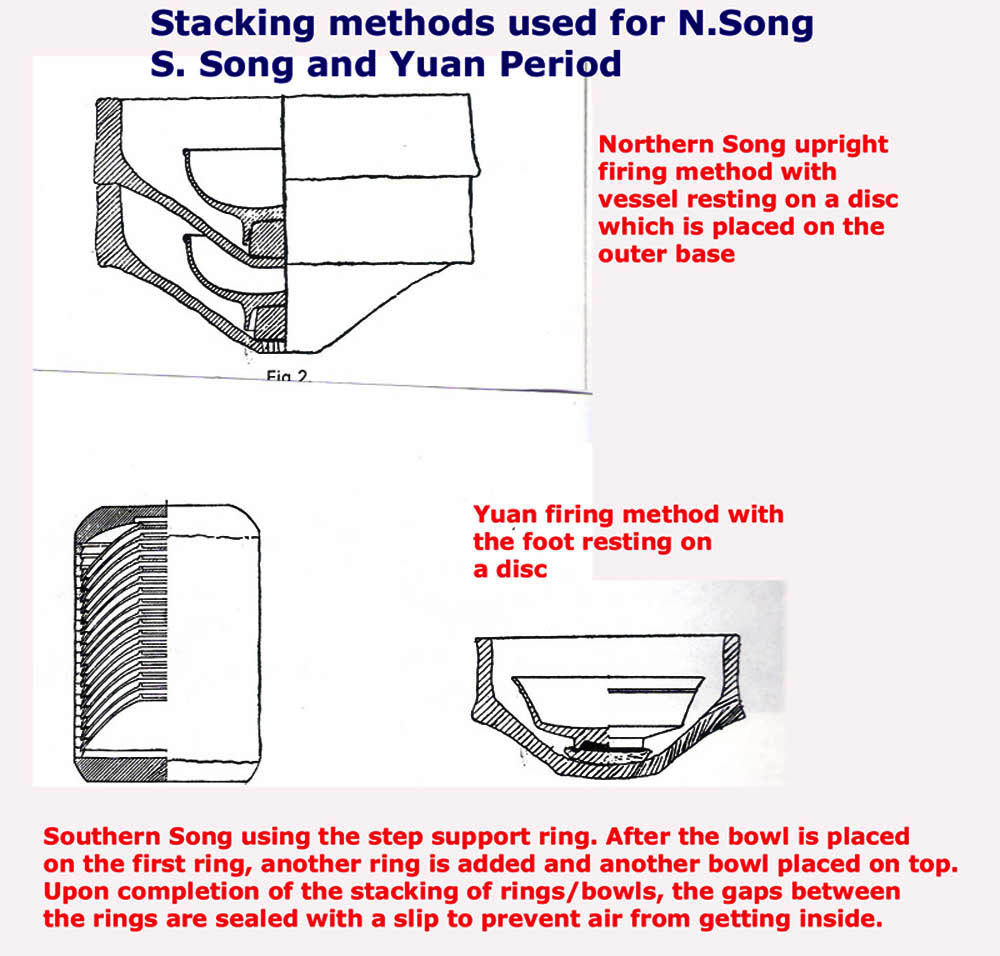
Sherds of bowls and dishes with unglazed rim
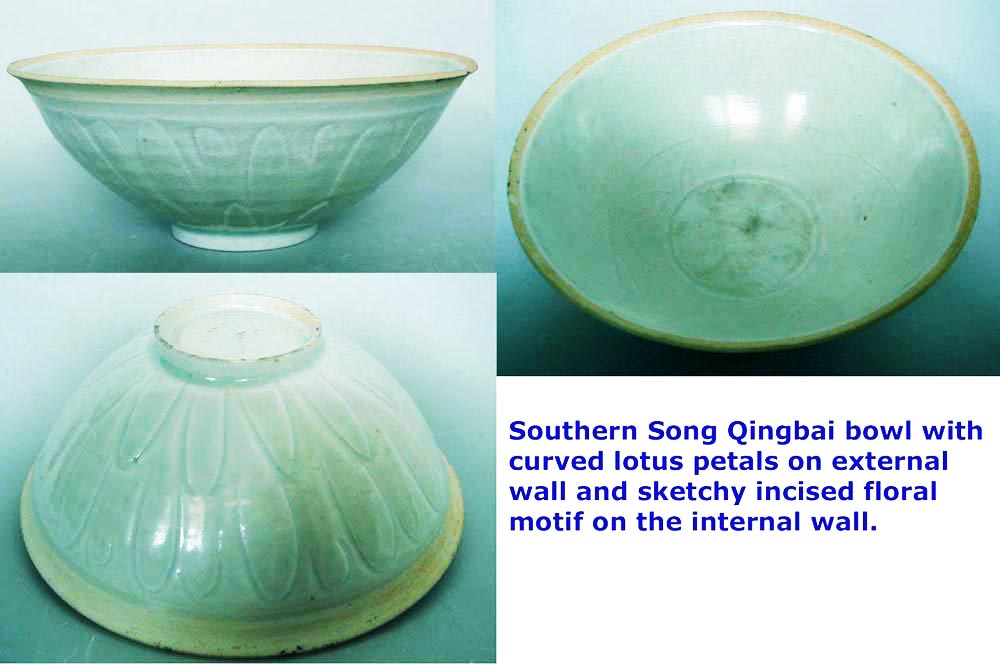
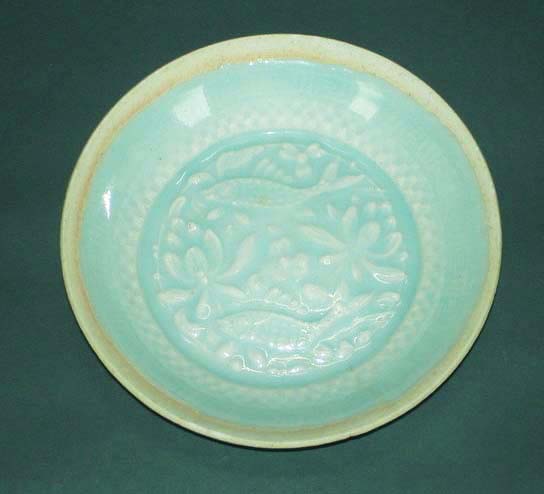 |
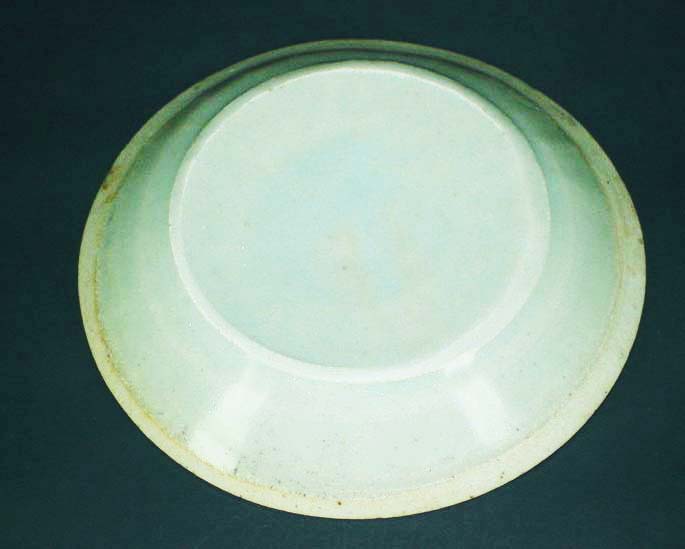 |
|
Southern Song dish with impressed fish and lotus motif |
|
The glaze from Northern Song/early Southern Song phase is more transparent. It is is clearer with sparsely spaced bigger bubbles. Those dated to later Song/early Yuan phase is less transparent in comparison. Under magnifying glass, the glaze shows many small bubbles.
Imperial Usuage of Qingbai Wares
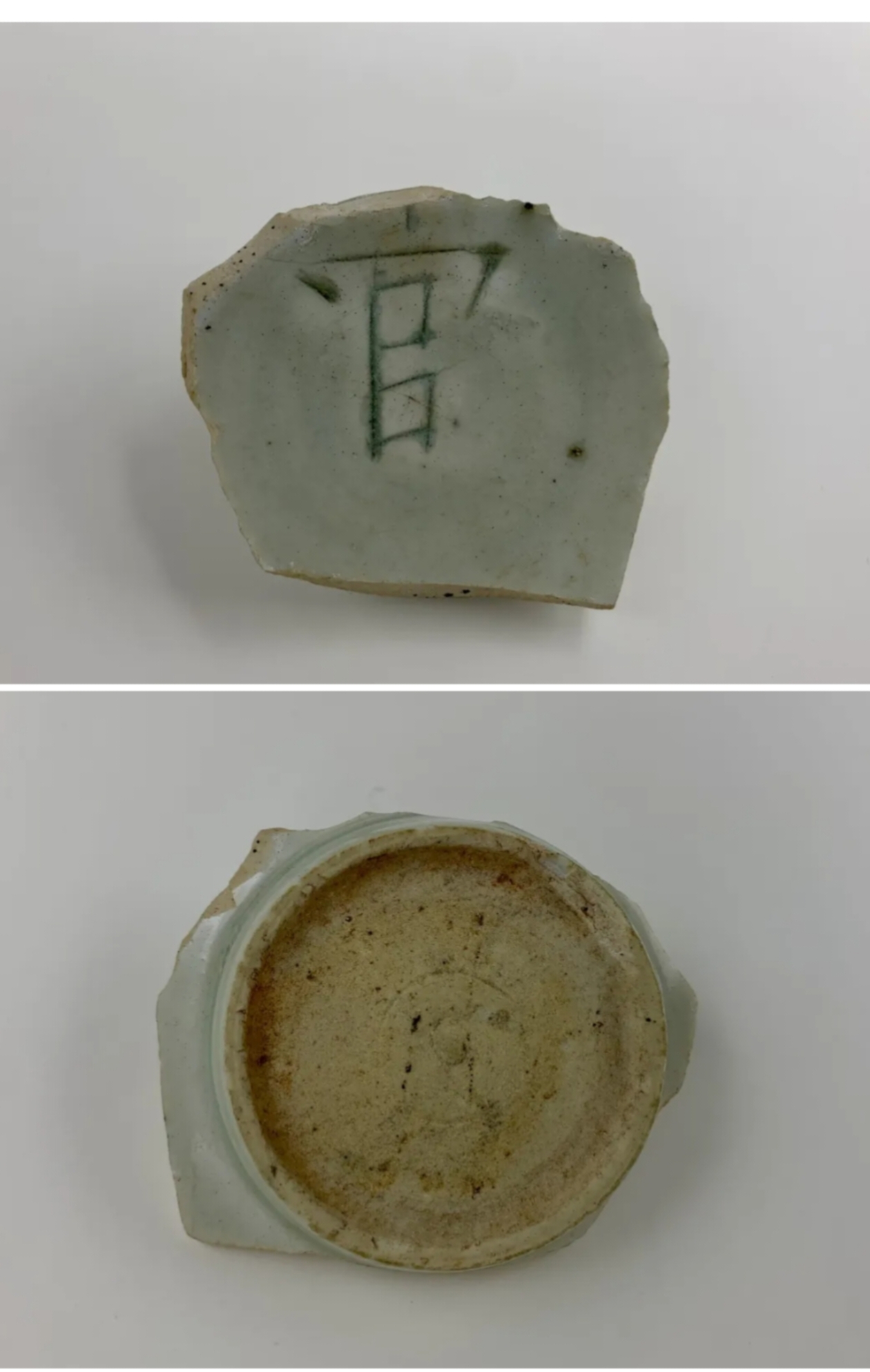 |
| Example with incised Guan Character |
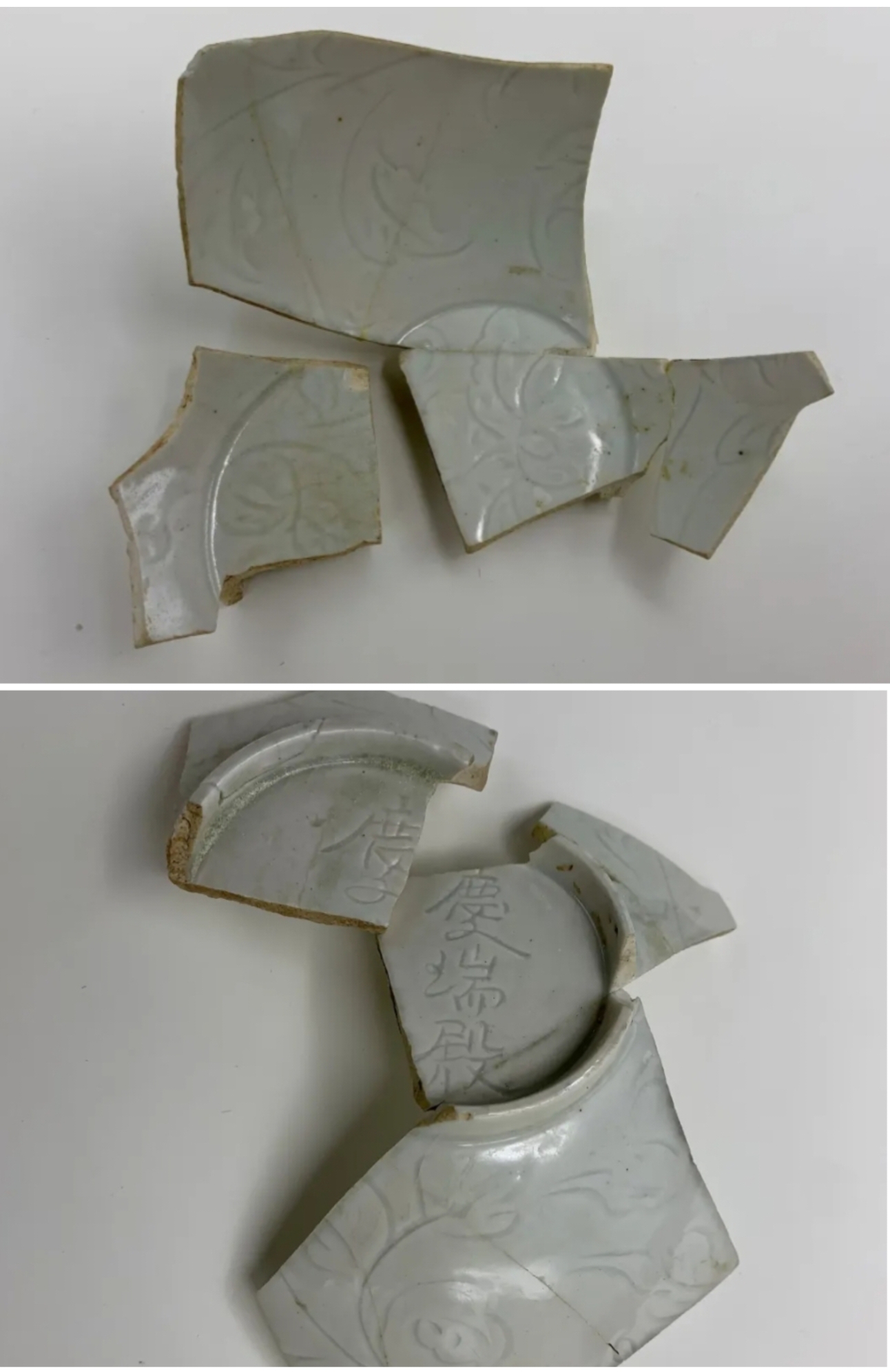 |
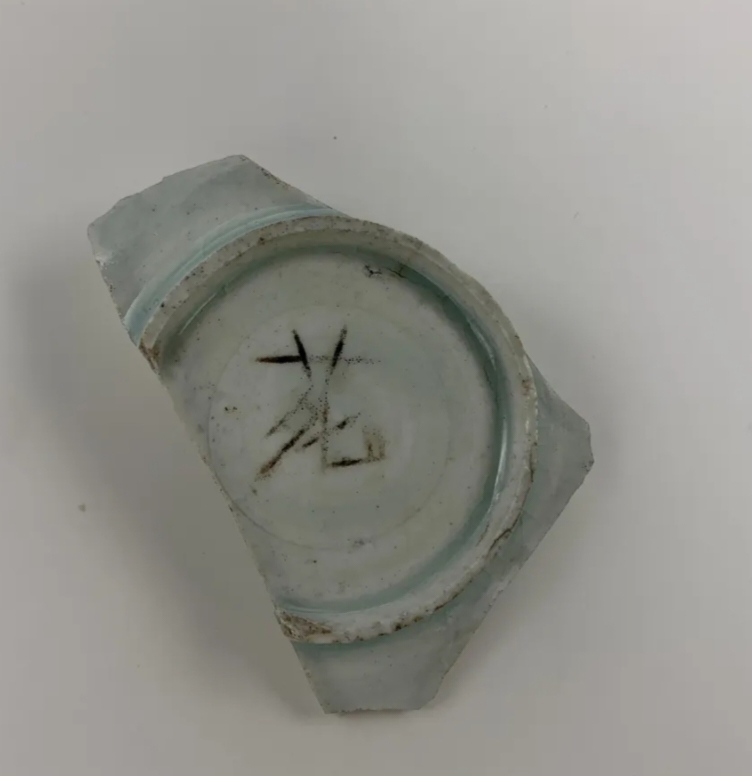 |
| Example with Qing Rui Dian and Yuan respectively |
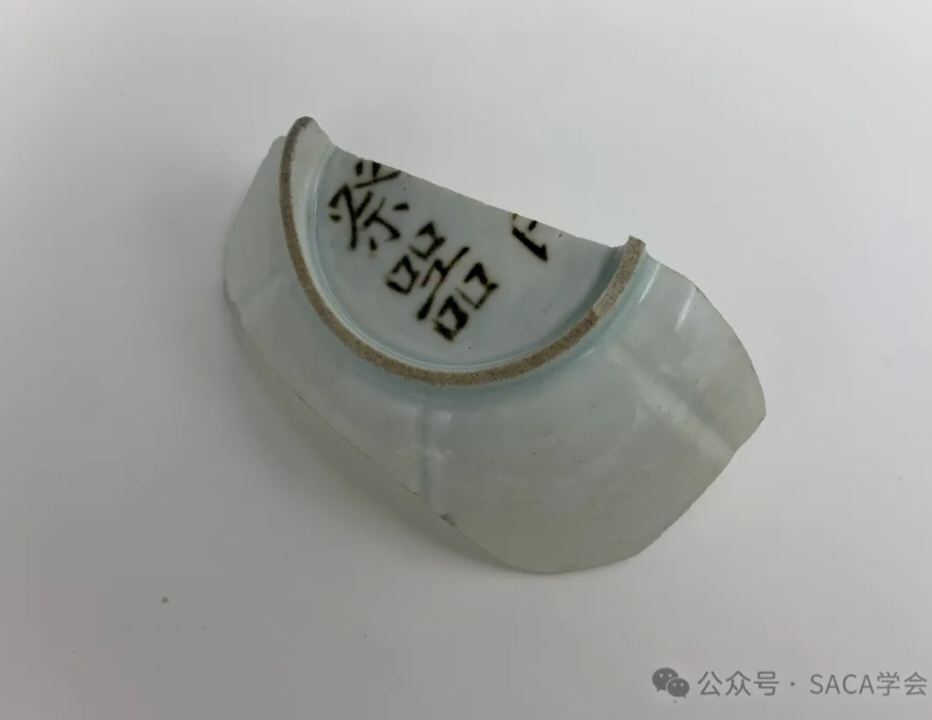 |
| Example with iron-brown written Ji Qi , i.e. ritual vessel |
Yuan Period
During the early Yuan period, the inverted method of firing was still in use. However, the quality of the products was inferior to those of the Southern Song period. The Yuan period especially from 14th century onward is characterised by vessels which are more thickly potted.
A new glaze with reduced glaze ash proportion of 10% as compared with about 30% in Yingqing glaze was introduced. This type of lime akali glaze has a higher viscosity. Hence, the glaze application can be thicker. The reduction in the fluxing agents also resulted in more un-melted quartz particles and some fine silica in the glaze stone remain un-dissolved. Hence, they cause scattering of light and the glaze looks opaque and matted with a softer white or white/light bluish colour tone. The term luan bai (卵白) meaning goose egg white was used to describe such colour tone. Some quantity of luan bai glaze wares were found in the Sinan wreck dated to A.D 1323. There was also changes to the support for the vessels during firing. The bowls and plates were placed with the foot sitting on a disc. In the earlier period, it would be technically infeasible to do so. The lime glaze composition with its high viscosity would cause the glaze to flow over the edge of the disc and resulted in the disc adhering to the foot of the vessels. With the new lime akali glaze, the viscosity is lower and overflow of the glaze is less likely to occur.
|
|
|
| Luan Bai glaze vessels | |
During the early Yuan period (probably till about first quarter of 14th century), Qingbai glaze was still the more common glaze formula used on vessels. After that, Luan bai glaze became more popular. Due to the thick and more opaque glaze, the moulded motif inside the vessels is usually not clear and details blurred by the glaze. The more transparent Qingbai glaze was still available, but found more on vases and jars with impressed/carved motifs. It's greater clarity enabled the details of the motif to show through.
| Yuan Qingbai bowl with carved duck and reeds motif. The more sketchily carved lotus petals on the external wall is typical of the Yuan period | |
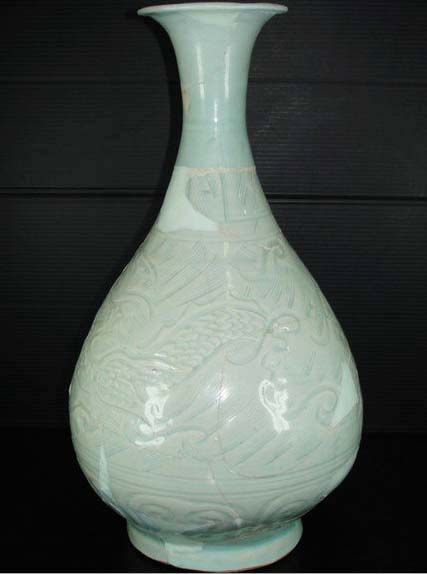
Early Yuan Yuhuchun vase with carved dragon motif
Vessels such as vases, ewers and jars/jarlets were made using moulded parts. The body is usually decorated with moulded motif. The use of iron-brown splashes/spots was popular on vessels, including those Longquan celadon, for the overseas market.
Vases formed by moulded parts. Such vessels are usually more crude and intended as burial items
Yuan qingbai wares were particularly popular in the Japanese and Southeast Asia market. There were many interesting vessels form such as vases with pedestal, various form of flattened, gourd or pear-shaped ewere with moulded decoration. Trails of beaded decoration were also found on some form of jarlets. Such forms were rarely found in the domestic market. In the Sinan shipwreck dated about A.D 1325, a substantial quantity of the above mentioned types of qingbai wares were salvaged.

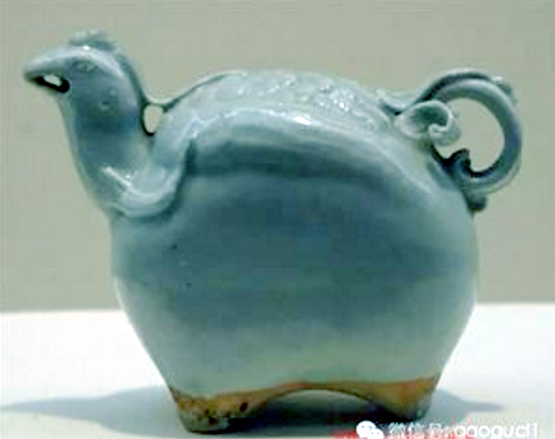
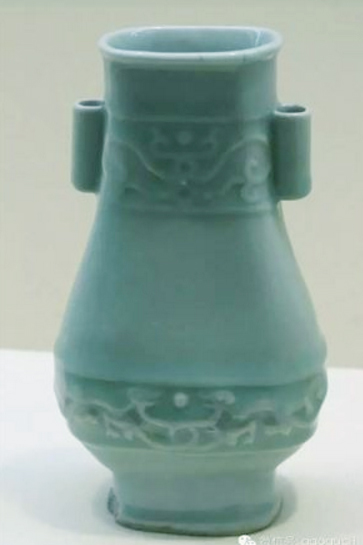
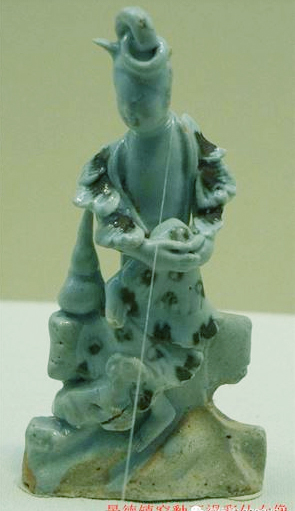
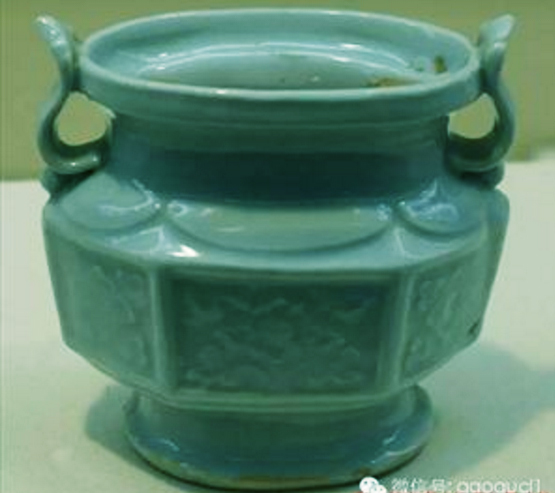
Yuan Qingbai wares found in the Sinan wreck
Many Yuan qingbai wares have also been excavated in the Philippines and Indonesia. Below few examples were found in Indonesia.
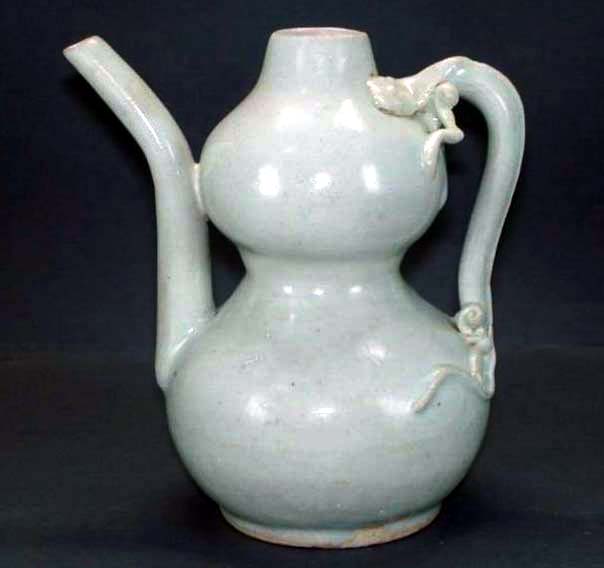 |
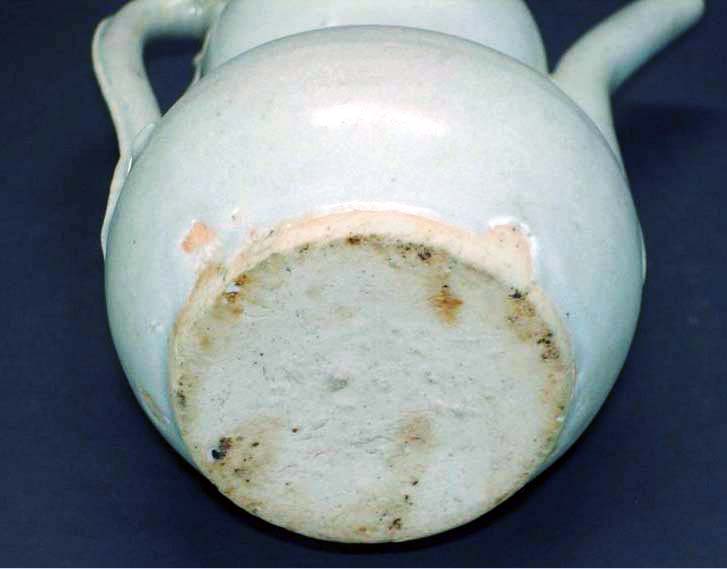 |
| Yuan Qingbai Gourd shaped ewer with a lizard like handle | |
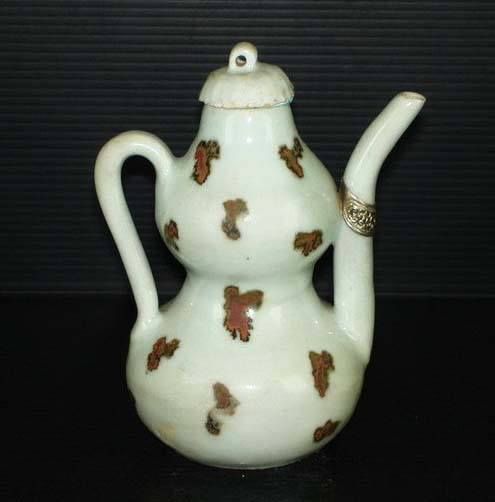 |
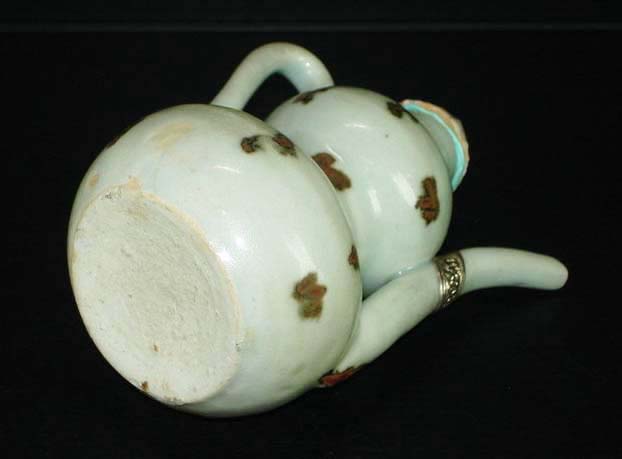 |
| This gourd shaped ewer with iron brown splashes was also formed by moulded parts. A popular items mainly manufactured for the overseas market. | |
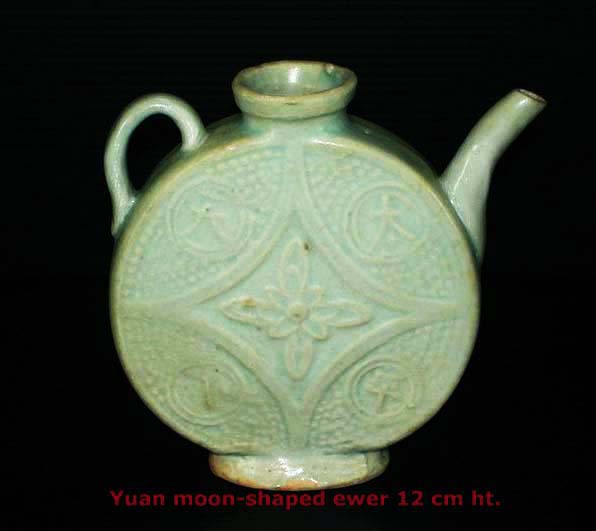 |
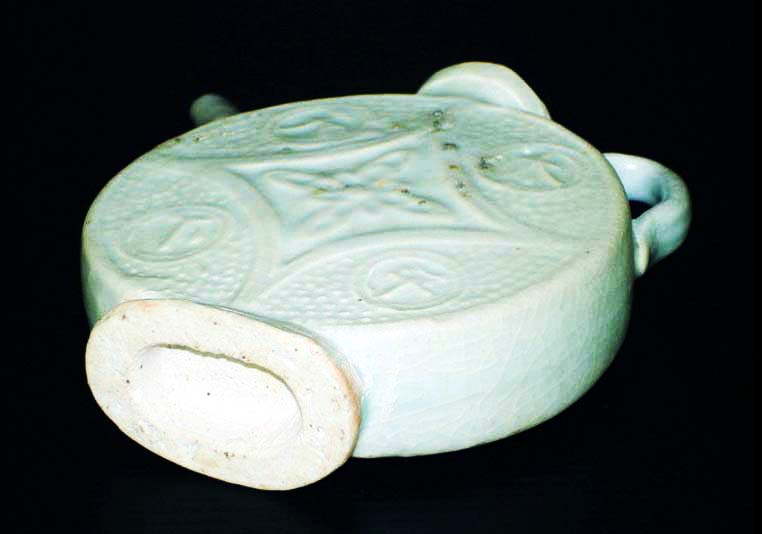 |
|
Yuan Qingbai moon-shaped ewer with moulded motif |
|
 |
 |
|
Yuan qingbai glaze ewer with elaborate impressed and moulded motif |
|
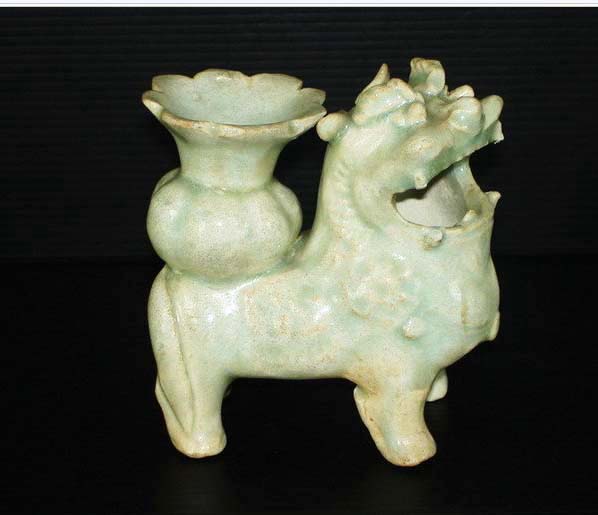 |
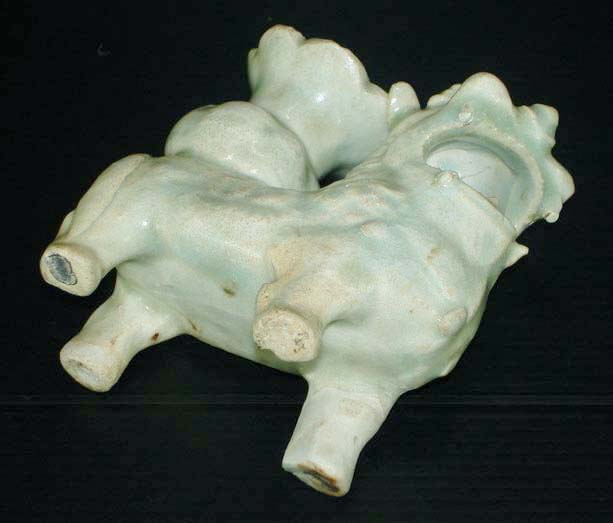 |
|
A beautiful Yuan Qingbai lion shaped water vessel |
|
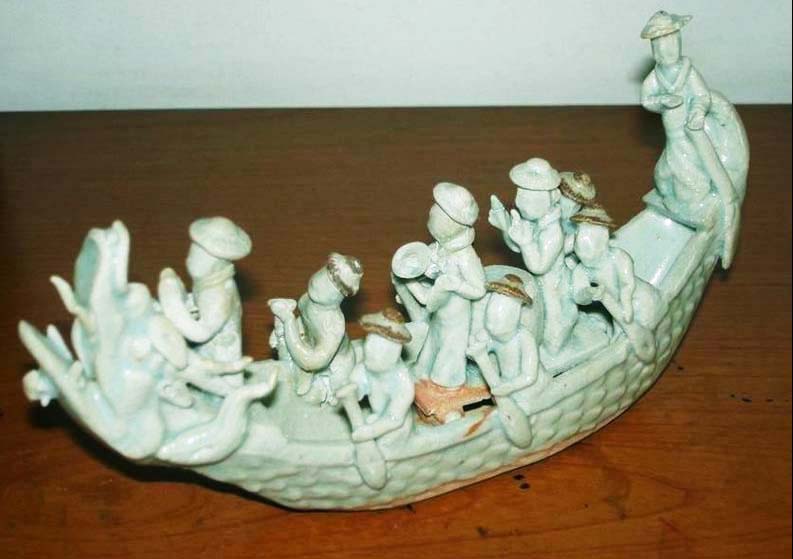
Interesting Yuan Qingbai vessel modeled in the form of boat with people
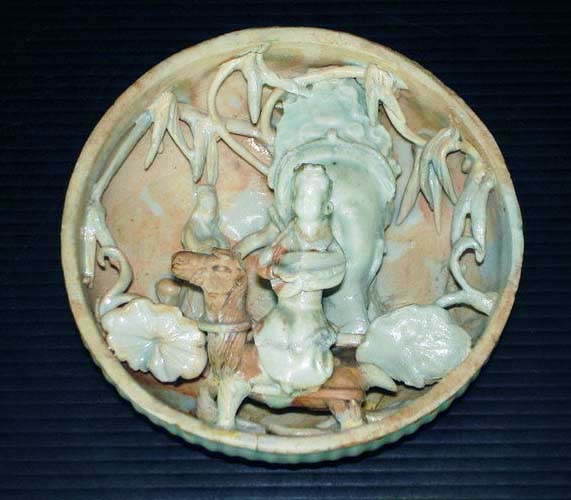 |
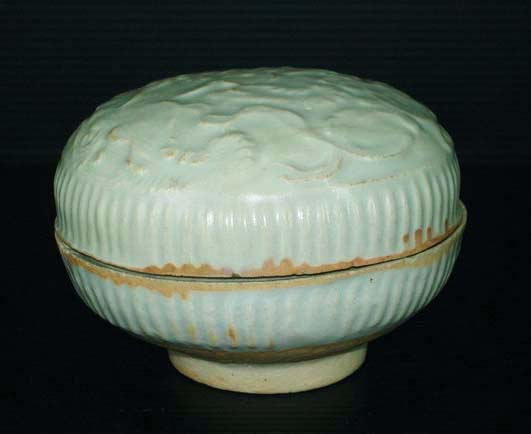 |
| Interesting Yuan Qingbai cover box with applique decoration of human on horse and lotus | |
|
A typical Shufu Luanbai glaze bowl with thick and more opaque glaze |
|
The Sinan wreck also carried small quantity of qingbai glaze saucers with iron-brown painted motif. There was also an example of incised motif covered by a splash of copper red. This early experimentation with iron-brown painted motif did not gain much popularity. But the experience and skill gained were not in vain. Subsequent change of medium to cobalt blue and copper red proved to be immensely popular.
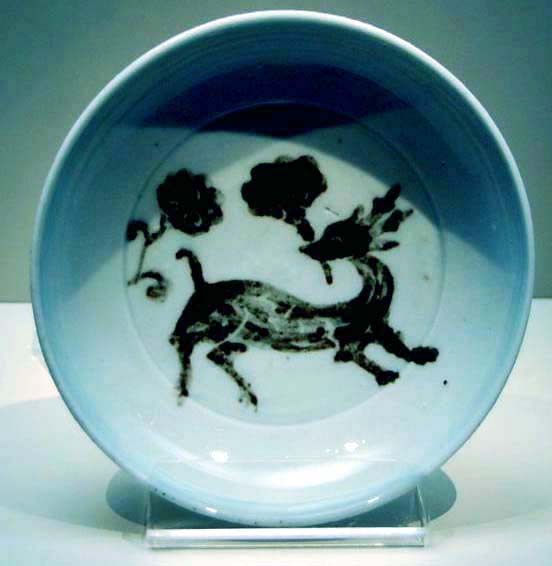
Yuan Qingbai dish with iron-brown painted motif
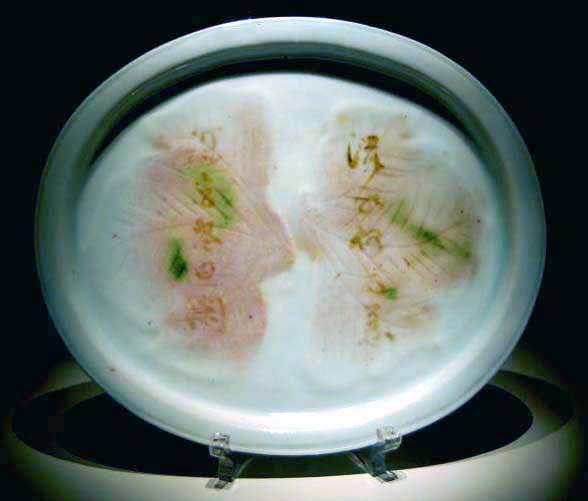
Yuan Qingbai dish with incised motif covered by splash of copper red
Qingbai wares from Guandong and Fujian
During the Northern Song period, Guangzhou was the main port for export of Chinese goods to overseas markets. Many kilns in Chaozhou and Guangzhou regions were in operation during this period. A significant quantity of the celadon and white/qingbai wares produced were targeted at the overseas clientele. During the Southern Song period, Hangzhou became the capital of the regime. Quanzhou in Fujian became the most important gateway for the maritime trade of the the Southern Song/Yuan period. During this period, many kilns sprung up in the Fujian coastal region. Again, the porcelain produced were mainly intended for the overseas market.
|
Song Qingbai dishes with impressed motif from a Fujian kiln |
|
| Yuan Qingbai bowl with impressed floral motif. Similar bowls were produced in Fujian Putian kiln |
|
Northern Song Qingbai jar with carved lotus petals. A product of Chaozhou kiln |
|
| Qingbai cover box. Such boxes were found in kilns in Fujian Nanan and also Chaozhou. Dated to Late Northern/early Southern Song period | |
|
Qingbai ewers dated to Early Southern Song period from the Jepara shipwreck. |
|
| Fujian Dehua Qingbai wares. They are dated to late Northern Song/early Southern Song period based archeological and shipwreck findings. The ewer was salvaged from the Jepara shipwreck. Qingbai wares from Dehua tends to have a very light bluish tone. Hence, it is sometime difficult to decide whether they should be classified as white or qingbai wares. | |
Video on Yuan Qingbai/Shufu wares from the Sinan wreck |
Sinan wreck is one of the most important discovery of Yuan Chinese trade ceramics.
Posted by Koh Nai King on Monday, February 27, 2017
For more examples of Qingbai wares, please view this album.
Written by : NK Koh (12 Jun 2008), updated : 15 Jan 2012, updated 30 Oct 2012
Reference:
Ceramic Finds from Jingdezhen kilns - Published by The Fung Ping Shan Museum, the University of Hongkong